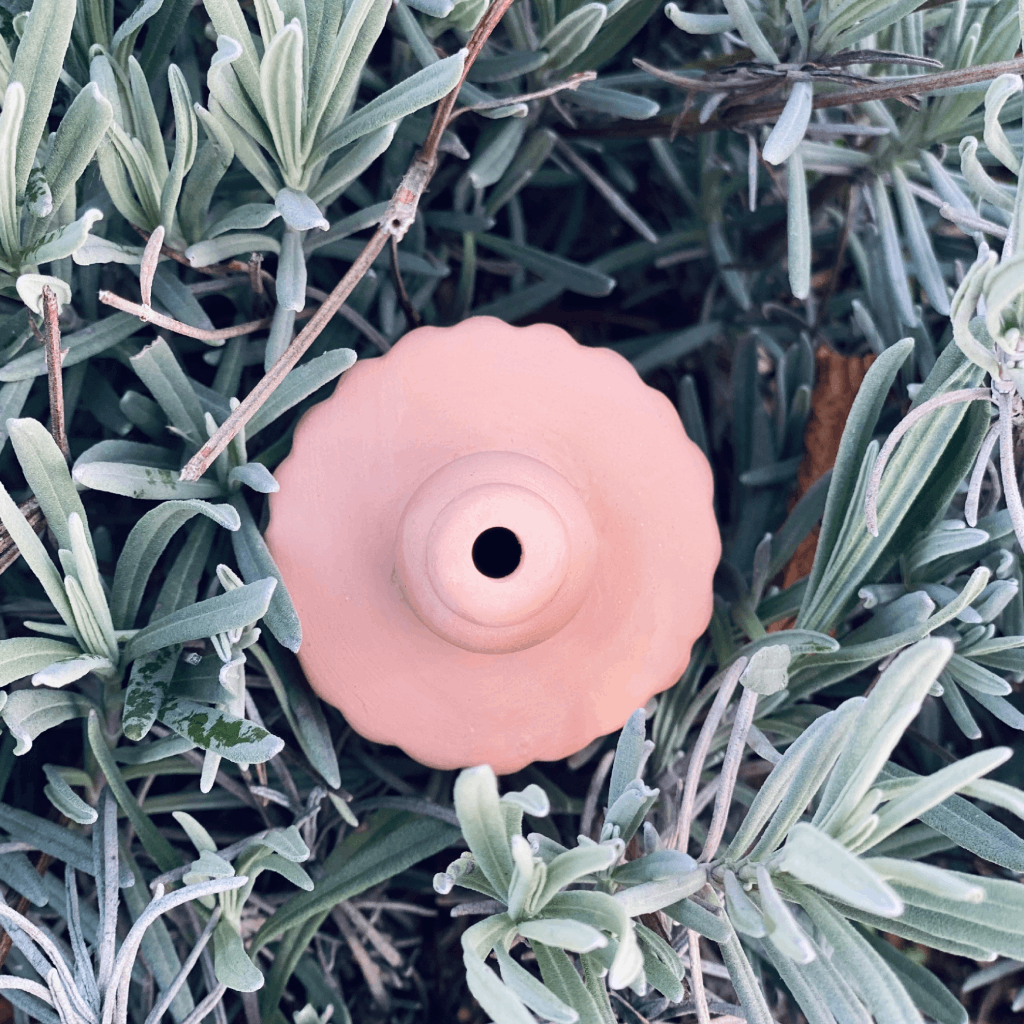Are you looking for an irrigation system for your garden that works sustainably, efficiently and without electricity? Then you may have already heard of tontau – our further development of the traditional Ollas.
Many gardening enthusiasts have legitimate questions when they first come into contact with tontau: Is it suitable for everyday use? Is it worth it? And what about maintenance?
Here we answer the most frequently asked questions – clearly, honestly and from practical experience.
💸 Isn't the tontau system expensive?
An objection we often hear is: “That's a lot of money for a bit of clay.” But the comparison is misleading. With tontau, you don't water per plant, but based on the area.
Depending on the soil structure, a tontau TWO waters an area of around 60 x 60 cm – which, depending on the bed plan, can be a lot of plants. In a set of 10 (€106.00 incl. T-pieces & hose clamps), the unit price drops to €10.60. This allows you to cover up to 0.6 m² of bed area – automatically, continuously and with up to 70% less water consumption.
Another very important point in the calculation is the following: Don't count on full square meters. In the rarest of cases, you want to water every square millimeter of your bed, but only where you have plants 🙂
📉 In the long run, you not only save water but also time – and give your plants a constant optimal supply.
🧱 Do I really have to dig up the clay pots every year?
Yes – clay pots should be removed from the ground before the first frost. This is due to the open clay structure, which could burst when it freezes. For many, this is part of seasonal garden maintenance – for others, it's a no-go.
We ourselves have tested 7 frost cycles under laboratory conditions and several cycles more in beds. Most of the time it works well - but not 100%. We want your tontau to last a lifetime at best and therefore provide you with this information.
For some, digging it up once a year is too much effort. We can understand that.
That's why we created tontau ONE:
This model is vertically inserted, is accessible above ground and can be pulled out without digging. Perfect for flowerbeds, pots and gardens with minimal intervention in the soil.
💡 Our tip: Combine both variants according to your garden style.
🧩 Isn't it all too complicated with the hoses?
Honestly, it looks more technical than it is the first time you do it. But after setting up the first row, the tontau system becomes a modular system that you can intuitively expand.
This is how it works:
-
- water the tontaus
- place them
- connect the pieces and hoses
- cover with soil and slurry
- start the water supply – done!
🏜️ Does the system also work in sandy soil?
Yes, but with adjusted spacing. Sandy soil diverts water faster, so the irrigation radius is smaller – about 20–25 cm. In this case, you should place the tontau more closely and soil it particularly well so that the clay comes into contact with the soil.
Many users with sandy soils report very good results – especially in greenhouses or with additional mulch cover.
🪴 Is tontau also suitable for pots or raised beds?
Absolutely. tontau shows its strength especially in small gardens or on balconies.
- With tontau ONE, you can perfectly supply individual plants in raised beds or pots – without any need for a power connection.
- A small water reservoir (e.g. bucket, glass bottle, canister) is all you need – the only important thing is that it is slightly higher up than your tontau.
🌿 Ideal for urban gardens, small vegetable patches or mobile planting solutions.
💧 Conclusion: tontau is a different way of thinking about garden irrigation
If you want to water your garden without electricity, less plastic and sustainably, especially underground, then tontau is exactly your system. It is:
✅ efficient with low water consumption
✅ automatic & without electricity
✅ plastic-free & durable
✅ suitable for garden beds, raised beds, pots & greenhouses
✅ easy to expand and flexible to set up
👉 Tip for searchers:
If you are currently searching for terms such as
“garden watering without a pump”,
“underground irrigation systems”,
“alternative to ollas”
or
“self-regulating irrigation” – then tontau is the right place for you. ;)
Any questions? Feel free to write to us. We will be happy to advise you individually and help you with planning or implementation.
💚 Your tontau team





